Description
90 Seeds Honey Rock Cantaloupe is named for it’s unique rock-like exterior and its sweet, honey-flavored orange flesh! A high-yielder, Honey Rock produces 5-7 large fruits, 6-7 inches in diameter, a vine. Its thick gray-green skin makes it sturdy for growth and ideal for travel. Prepare into fresh fruit, salads, pressed in sorbets and drinks, wrapped in prosciutto, or desserts. A rich source of potassium, vitamin A, and vitamin C. We ship in 1 business day. Shipped with USPS First Class Mail. Plant Name: Melon, Honey Rock Cantaloupe Latin Name: Cucumis melo Days to Germinate: 7-14 Days to Harvest: 70-90 Germination Rate: 91% Test Date: 11/21 Growth Habit: Vine USDA Zones: 3-12 Lifespan: Annual Country of Origin: United States Sunlight: Full Sun, Partial Shade GMO: No Pollination: Heirloom, Open-Pollinated Fungicide-Treated Seeds*: No Seeds Packed For**: 2022 *Fungicide-treated seeds protect the seedlings from diseases until they are up and growing. Do not eat treated seeds. **Seeds are freshly packed for the growing season of the year listed. Seeds are still viable beyond pack date. Store in a cool and dry location such as the refrigerator or basement to best preserve germination rates. Planting Instructions: Soil Preparation: Prepare soil by removing large weeds, large rocks, and litter from the planting area. Dig or plow the soil 8-10 inches deep in winter or early spring. You may optionally apply manure or compost at 50-100 pounds per 1,000 square feet, or 2-4 tons per acre , to build the organic matter content of the soil. Turn the soil over to cover organic material completely. Next, work the soil into ridges or hills 4-8 inches high and 12-14 inches wide. This creates well-draining soil beds. Heavier soils may require higher soil beds. Place rows of muskmelons or honeydews 6-8 feet apart. Since melons are vining crops, they require a lot of space and are best for larger gardens or lot-sized urban gardens; they may grow in small gardens if vines are trellised and the fruit is supported. Melons grow best in deep, well-draining sandy or sandy loam soil with plenty of organic matter and a neutral pH. Heavy soils with lots of clay may cause smaller sized plants and produce fewer melons. Planting: Try not to plant seeds until the soil warms in the spring and all danger of frost is past since melons are warm-season crops and can be easily injured by frost. Black plastic mulch can help to increase soil temperature and give melons an earlier start on growth. To direct sow, plant 6-8 seeds 1-1 1/2 inches deep in hills spaced 2-3 feet apart within rows. Water after planting if soil is dry. Transplanting, in contrast to direct sowing, may save 10-12 days of harvest time. To transplant, plant seeds in peat pots 2-4 weeks before transplanting. Transplant into the garden before the second true leaf opens (“true leaves” are the first two large leaves that appear before the smaller “seed leaves” appear). After melon plants break through the soil, thin to 2 plants per hill. Planting Depth: 1- 1/2 inch Within-Row Spacing: 2-3 feet Between-Row Spacing: 6-8 feet Care During the Season: Watering: Water the at least 1 inch per week. High temperatures, high winds, and sandy soils will increase the need for water. Weeding and Pruning: Keep plants as weed-free as possible. When plowing or hoeing, be careful not to cut too deeply into the soil near the melon plants as cutting the feeder rooters which may slow the plant’s growth. Pruning can increase fruit size of muskmelons and honeydews, but it is usually not needed. Fertilizing: Melons benefit from small amounts of fertilizer in 2 or 3 applications. Dig a 4-6 inch deep trench, about 2 inches from the side of the row, all down the row. You may optionally scatter 2-3 pounds of fertilizer for every 60-70 feet of row in the trench. Phosphorous is important for muskmelons at planting and nitrogen is important when vines begin to run. Cover the fertilizer and plant so seeds do not touch the fertilizer. Make the second fertilizer application when vines are 8 inches long. Insecticides: Insecticides may be used to protect plants. Bt-based insecticides and sulfur are organic options that can be used for prevention. Sulfur also has fungicidal properties and helps in controlling many diseases. Bt neem oil can be used to control the spider mites, and pyrethins can control for the cucumber beetle. Neem oil and insecticidal soaps are good ways to control for aphids. Before using a pesticide, read the label and always follow cautions, warnings and directions. Diseases: Rotating crops is important for disease control. To prevent build-up of diseases, it is advised that melons should not be planted in the same place more than once every 3 or 4 years. If spots appear on the leaves and no insects are present, a fungicide may be needed. Neem oil, sulfur, and other fungicides may be used. Please always follow label directions. Harvesting: Harvest muskmelons when the fruit rind changes to a yellowish-orange color, the stem begins to separate or slip from the fruit, and the odor gets strong. If left long enough, the stem will naturally separate from the fruit (call “full slip”). Fruit at this stage should be used within 36-48 hours as it may spoil soon. For better quality, harvest fruits at the “half slip” stage when the stem is partially separated from the fruit. Try not to harvest melons too early because the sugar content does not increase after harvest. Muskmelons can improve in flavor after harvest, but this is usually due to mellowing of the flesh. Nutrition Facts: Cantaloupe Amount per 1 melon, medium (about 5″ dia) (552 g) Calories 186 % Daily Value* Total Fat 1 g 1% Saturated fat 0.3 g 1% Polyunsaturated fat 0.4 g Monounsaturated fat 0 g Cholesterol 0 mg 0% Sodium 88 mg 3% Potassium 1,474 mg 42% Total Carbohydrate 45 g 15% Dietary fiber 5 g 20% Sugar 43 g Protein 4.6 g 9% Vitamin A 373% Vitamin C 337% Calcium 5% Iron 6% Vitamin D 0% Vitamin B-6 20% Cobalamin 0% Magnesium 16% *Percent Daily Values are based on a 2,000 calorie diet. Your daily values may be higher or lower depending on your calorie needs.

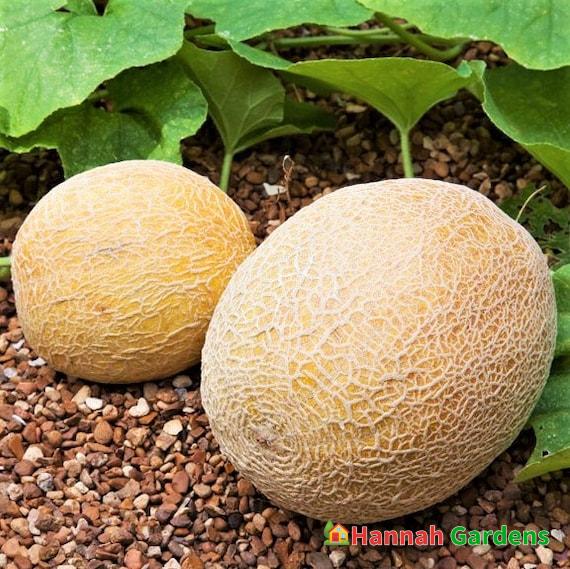
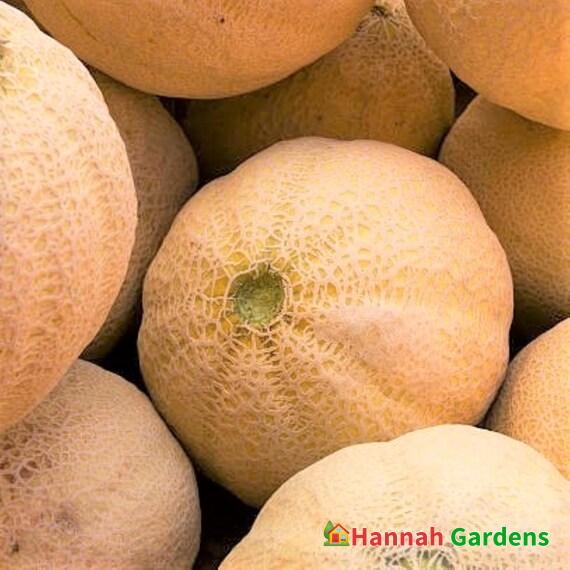
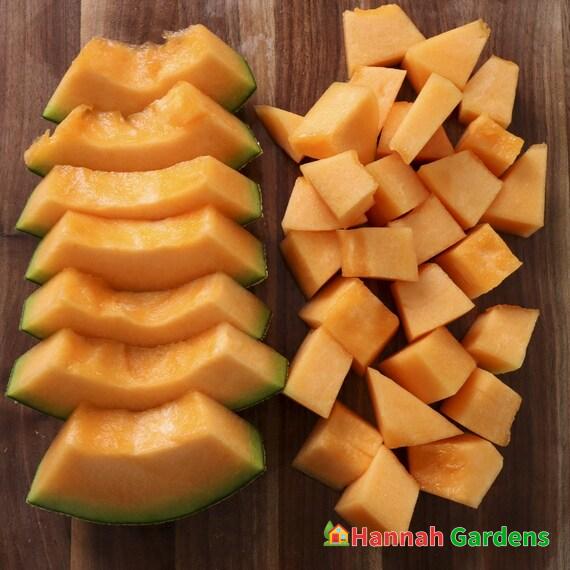

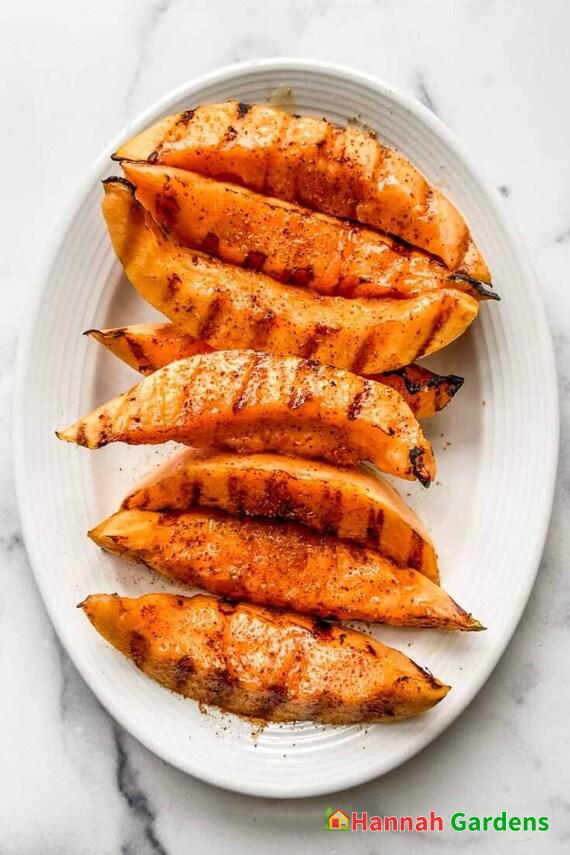


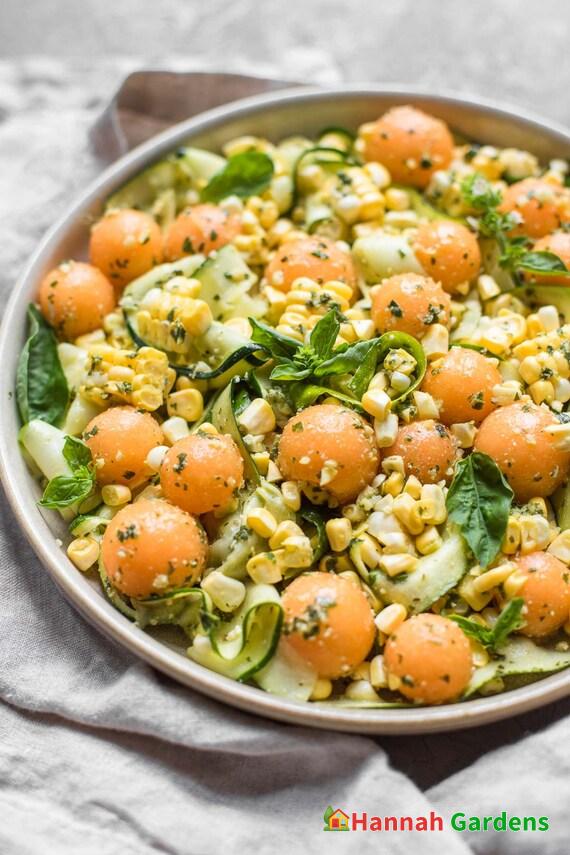


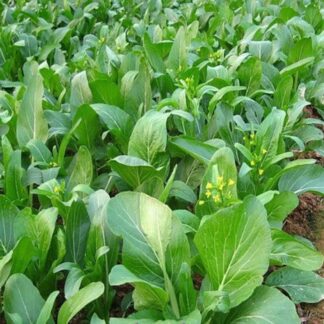
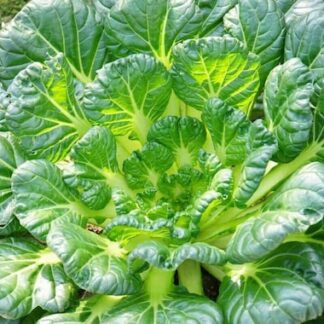
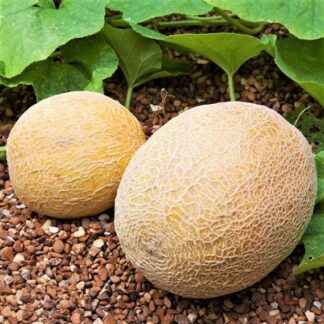
Reviews
There are no reviews yet.